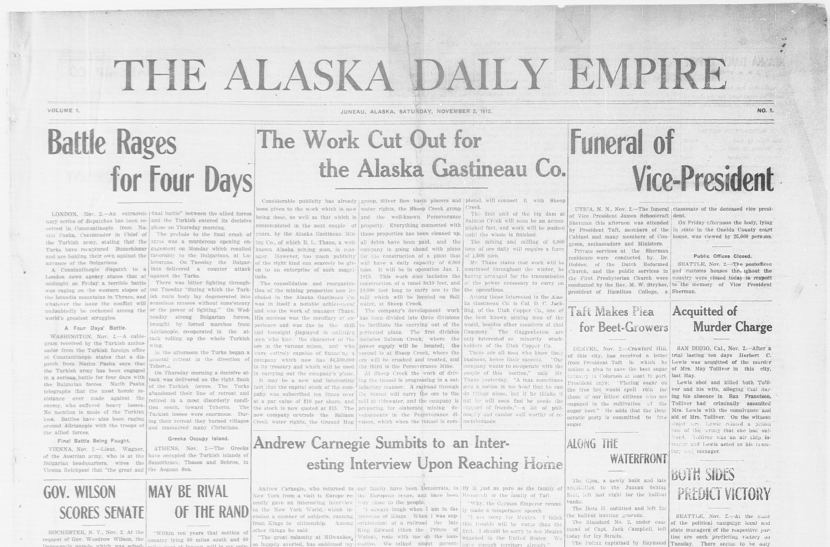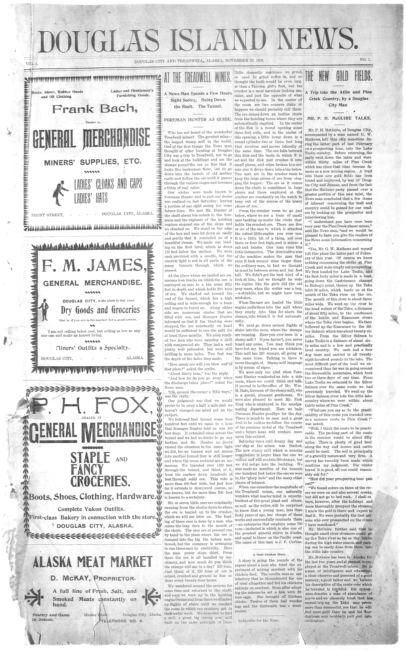
Some of Alaska’s oldest newspapers are being digitized and posted online as part of a national project to provide free public access to historic periodicals.
Deep in the main building of the Alaska State Libraries, Archives and Museums, there are walk-in coolers loaded with racks of newspapers saved on microfilm. These materials are preserved at a constant 50 degrees Fahrenheit.

“We have titles from all over the state and from very small communities,” Project Director Anastasia Tarmann said.
Alaska’s earliest known newspaper was printed around the same time the territory was being sold by Russia to the U.S. It was a hand-bound English-language sheet put together by a Western Union expedition at Port Clarence on the Seward Peninsula.
“It’s called The Esquimaux, it’s spelled in a funny way with a ‘ux’ at the end,” she said. “That was published by a telegraph worker. He published only for a year but that is actually our first newspaper – it’s online already.”
But soon, newspapers sprang up alongside the mines, lumber mills and ports. And those are the papers the state archives have been saving to microfilm since the early 1990s.
The problem is that microfilm is fragile and it can only be viewed at the state archives in Juneau or mailed out through interlibrary loan.
Now, they’re finally able to go digital.
In 2016, the state archives received a $275,000 grant from the National Endowment of the Humanities to participate in the National Digital Newspaper Program.
Archivist Leah Geibel is part of the small team digitizing the microfilms, scanning them from a reel-to-reel, into a computer.
“Basically, it runs through here and there’s a little camera right here that digitizes it,” she said, as she threads the microfilm into the reel-to-reel scanner. “Then I go through and process it and that’s what gives me the individual images.”
These “individual images” are the pages from century-old newspapers. A 1912 front page from the Alaska Daily Empire, the forerunner to the Juneau Empire is a mix of wire dispatches from the Balkan Wars to a list of ships in port.
But as they’re scanned online, names and places can now be searched for by keyword.
Geibel has spent the better part of this year with these old newspapers and she said the themes are familiar.
“People are concerned about conservation, people are concerned about developing the resources and I think that’s something that’s been one of the major issues throughout Alaskan history,” she said.
In August the first batch, about 100,000 pages, from three newspapers were sent to the Library of Congress.
Over the next year, 10,000 pages will be added each month. Geibel also maintains a blog with updates on the project’s progress.
The hard part was deciding which would be digitized first.
“There are so many newspapers, so many great pioneer newspapers” said Juneau Empire reporter James Brooks, who served on an 11-member panel of academics, historians and journalists to decide which 10 newspapers would be digitized this year. “I know it’s our hope that in the future those other papers will be able to be digitized too.”
By the end of the year, a total of 10 historic newspapers should be digitized and posted online.
They can be viewed, searched and downloaded — for free — on the Chronicling America website.